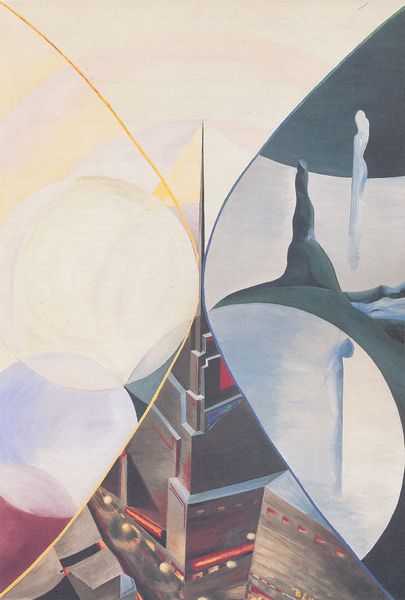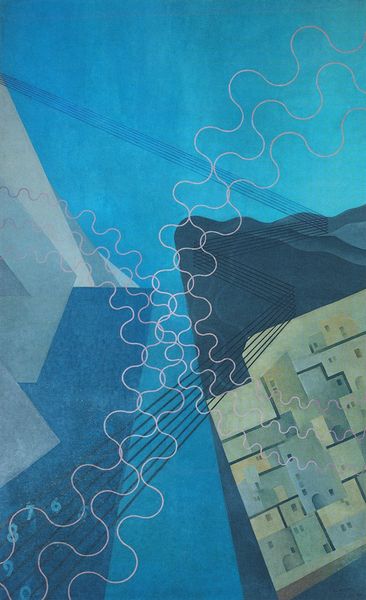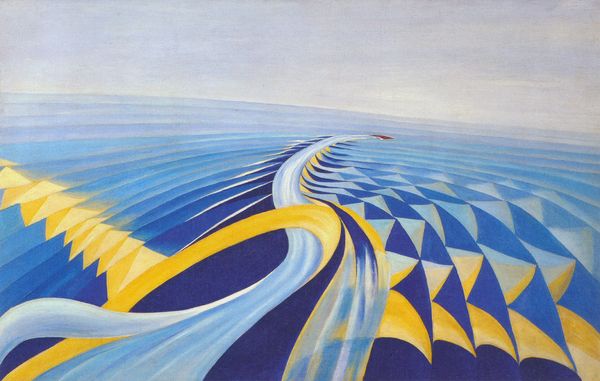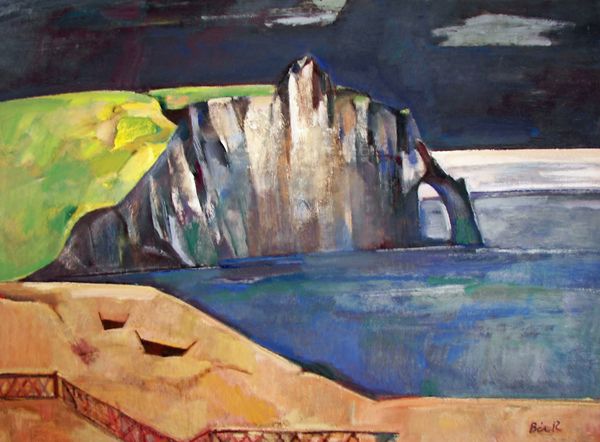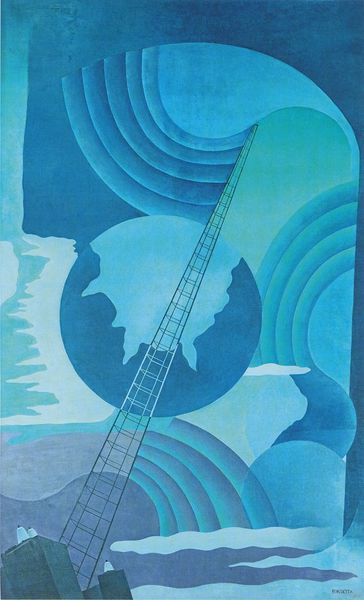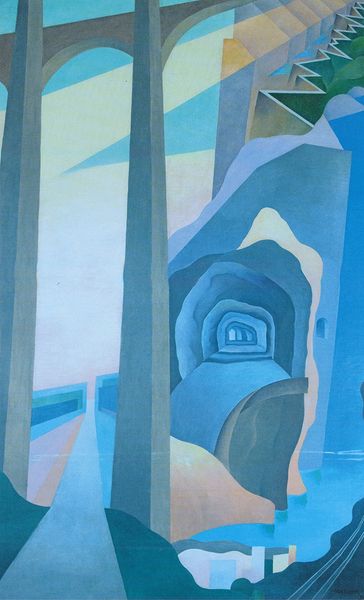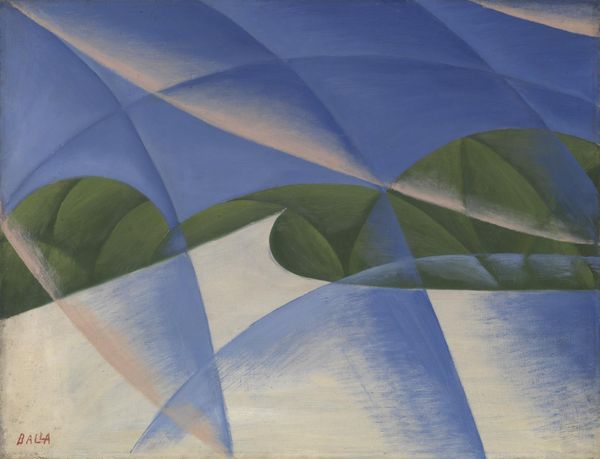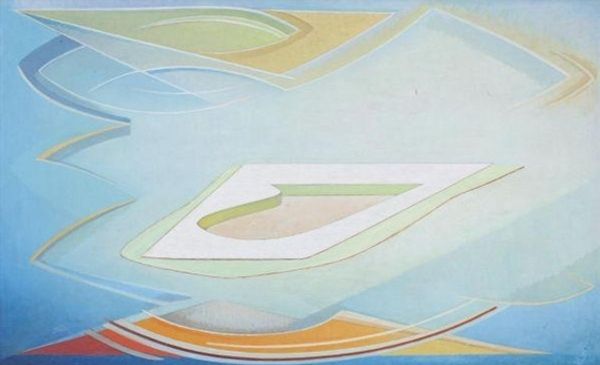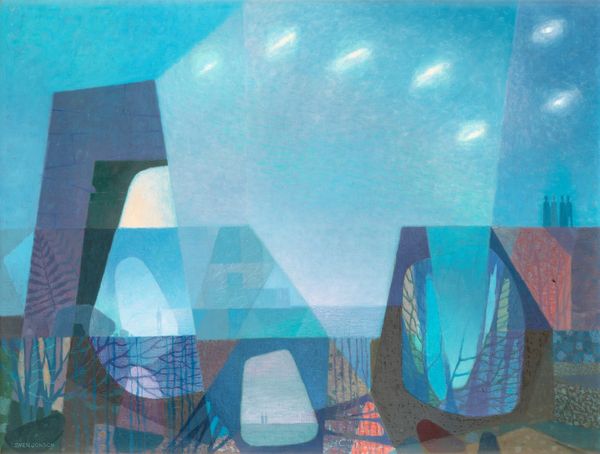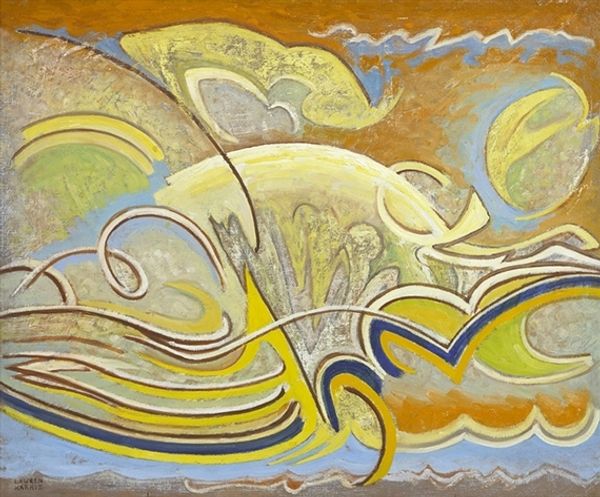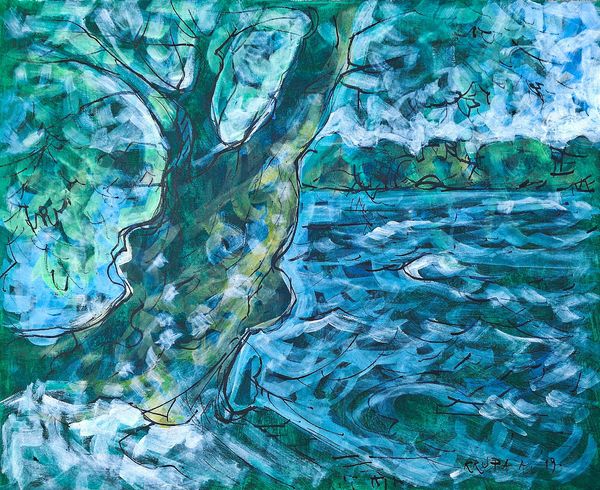
Copyright: The Galleries at Moore. La Futurista: Benedetta Cappa Marinetti. Edited by Elsa Longhauser. Philadelphia, PA: Moore College of Art and Design, 1998. Exhibition catalogue. The Solomon R. Guggenheim Museum. Italian Futurism 1909 - 1944: Reconstructing the Universe. Edited by Vivian Greene. New York, NY: Guggenheim Museum Publications, 2014. Exhibition catalogue.
Curator: Before us is Benedetta Cappa's 1934 oil on canvas, "Synthesis of Marine Communications". It offers an intriguing synthesis of futurist aesthetics. Editor: Immediately, the color palette strikes me. The cool blues and the subtle yellows evoke a sense of breezy openness, perhaps an almost dreamlike impression of a port city. I'm also interested in the apparent thinness of the application of oil on canvas – can you tell us anything about the way Cappa worked, the physical handling of her materials? Curator: Cappa, associated with the second generation of Italian Futurists, sought to depict speed, technology and dynamism, embracing Marinetti's theories of simultaneity, "lines of force", and "compénétration." These principles suggest that Cappa likely favored layering transparent pigments and allowing shapes to intersect freely on the canvas to represent the perceived speed and feeling of communication in maritime environments. Editor: Absolutely. It is fascinating to think about those very intentional technical choices and their broader societal reflection. I think it's visible through the rendering, that notion of transparency and light moving through and across solid and engineered constructions. This makes the canvas into more than just pigment. It becomes, instead, a commentary on how modernity shapes not only our perceptions but our very environment through production. Curator: Precisely. Note the converging lines representing the waves and sky, all oriented toward that stylized, semi-abstracted vessel in the upper center, potentially meant as a ferry or ocean liner—suggesting powerful, almost mythological transit. She captures both literal and metaphysical voyages. It's interesting how even forms like waves, which have deep symbolism linked to fluidity and movement, have become structured through the painting's architecture. Editor: The geometry is particularly striking. And in seeing all of this synthesis rendered through that streamlined architectural vision of the port city…It almost makes you question if our technology is directing our environment. Perhaps she implies humanity isn't so in control, and in 1934 she was observing it at that time through what tools, textures, labor, and built environments existed. Curator: Yes, I see the subtle critique as well as her admiration for progress. It really encapsulates the futurist tension between utopian and dystopian visions. I'm impressed, looking back, at how it all comes together in this piece through its innovative perspective. Editor: And for me, revisiting Cappa’s focus on material culture gives a refreshing sense of place.
Comments
No comments
Be the first to comment and join the conversation on the ultimate creative platform.
